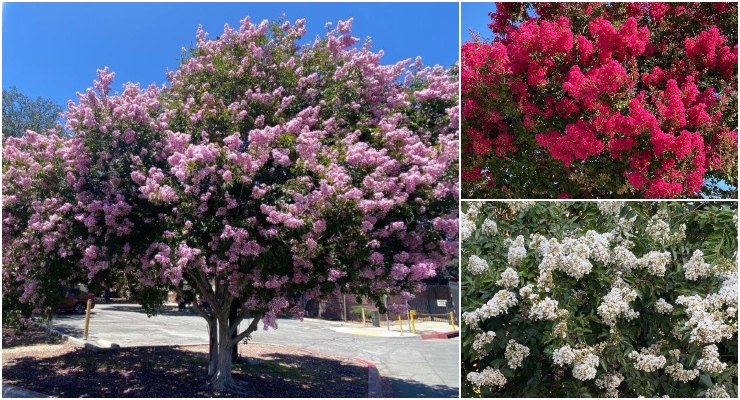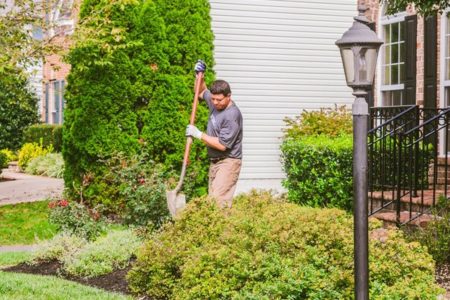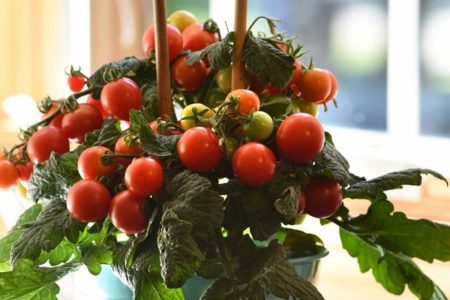
Each month, Pasadena Beautiful Tree Program Chair Emina Darakjy presents a ‘tree of the month’ in order to educate Pasadenans about the trees around them. Many people drive by trees they admire, but have no idea what they are called, or what their growing habits are. Pasadena Beautiful was founded in 1960 by a group of volunteers who saw a need to beautify their city and enhance its tree canopy.
The crape myrtle (also known as “crepe myrtle”) is a small to medium size deciduous tree, native to China, Japan and the Indian subcontinent, that was first introduced to Europe in 1759 from China.
Several different hybrids of this tree were developed at the U.S. National Arboretum in Washington D.C., in the 1960s.
The tree can reach a height of 20-to 30-feet tall with a 10- to 20-feet spread. The shape of the crown varies depending on the cultivar.
According to spruce.com, Cultivars—short for “cultivated varieties”— are plants that often have been propagated not from seed, but rather vegetatively; for example, via stem cuttings. With this method of propagation, one can be sure that the offspring will retain the characteristics of the parents for only that one generation.
The trunk is very smooth with an exfoliate thin bark exposing a surface with blotches of tan, cinnamon, gray and pink colors. Underneath, the leaves are opposite, glossy green and oval, turning yellow, red and orange in the fall prior to dropping off.
In late summer when few other trees are blooming, the crape myrtle is covered with showy clusters of cone shaped flowers with crinkled petals that resemble crepe-paper. The flowers come in a wide range
of colors, including brilliant shades of pink, violet, salmon, red and white.
The crape myrtle is also considered one of the longest blooming trees anywhere. After the blooming period, woody brown seed capsules resembling little flowers themselves appear on the tree branches
It prefers a sunny location and can do well in many type of soils, including clay. It requires deep watering when young, but less frequently as the tree matures, making it moderately drought-tolerant.
The crape myrtle is not suitable for coastal and foggy areas as this tends to cause mildew. The same problem occurs if the tree is planted in the shade.
A number of crape myrtle hybrids were all developed at the National Arboretum—Arapaho with red flowers, Natchez with pure white flowers, Tuscarora with coral/pink flowers and the Muskogee with lilac flowers, and are all considered mildew resistant.
The crape myrtle is a very easy tree to grow. It requires pruning only for shaping or clearance when planted as a street tree and it has a non-aggressive root system, making it a good candidate for very narrow parkways.
It is also suitable under power lines.
The crape myrtle does well when planted in a grouping in one’s garden, in parks as a multi trunk, a shrub, or trained as a single trunk/standard form when used as a street tree.
The huge display of flowers, the attractive bark and the stunning foliage colors in the fall make the crape myrtle attractive year-around and a prized addition to any landscape.
The only thing missing for me is that I would love to see a plant breeder come up with a yellow crape myrtle!











